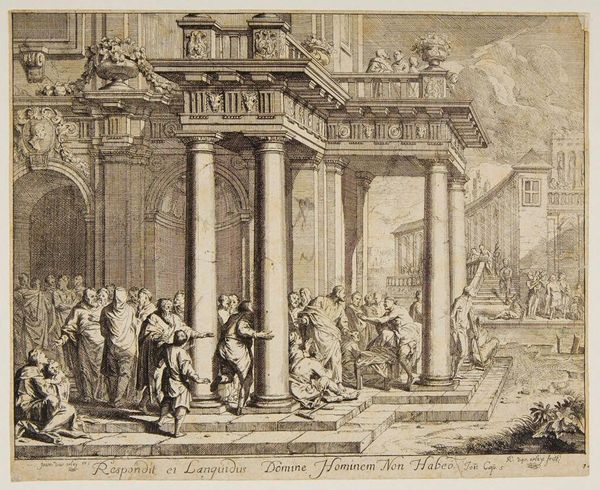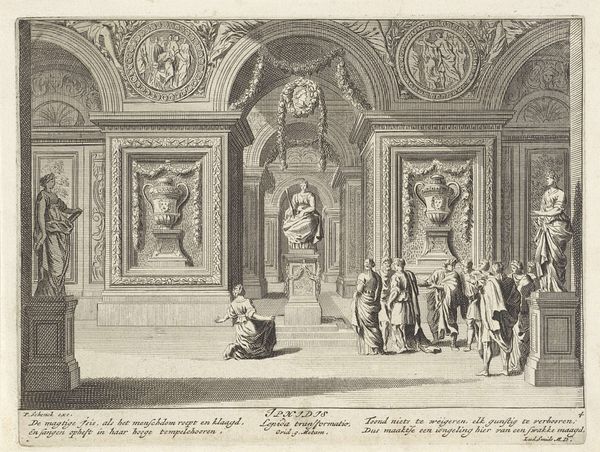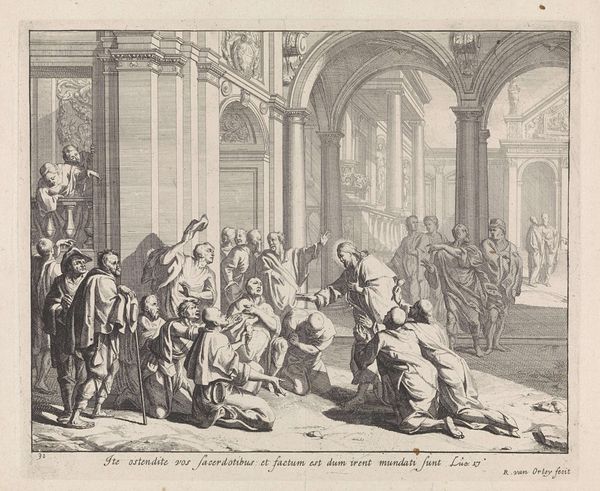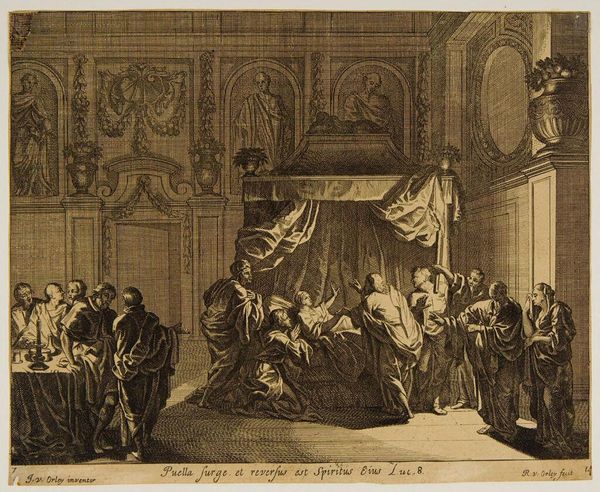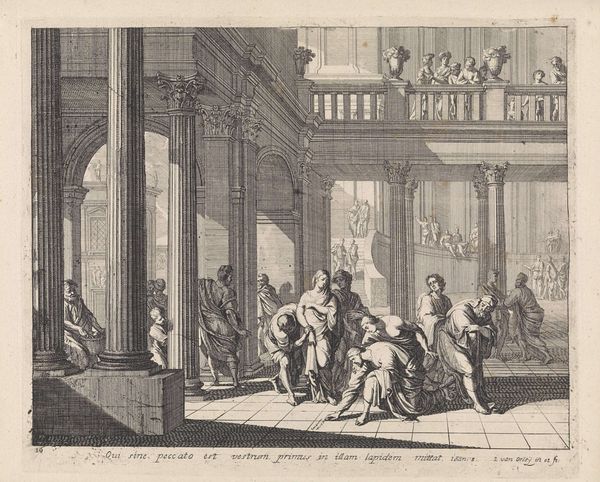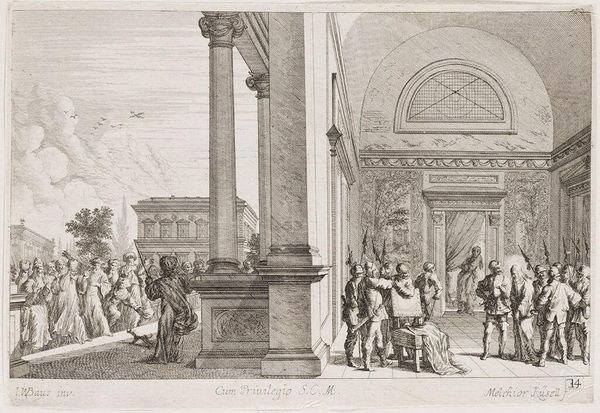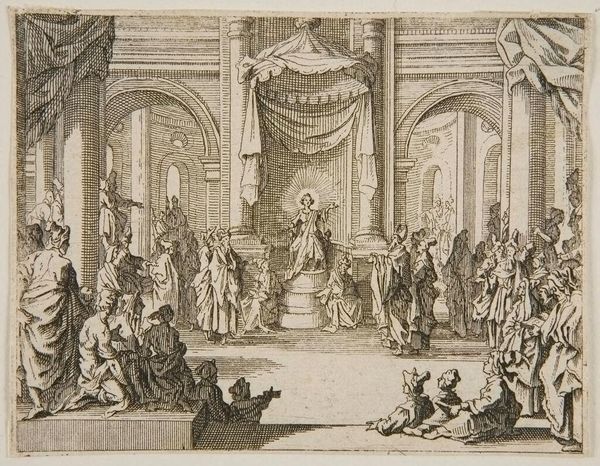
engraving, architecture
#
baroque
#
figuration
#
line
#
history-painting
#
engraving
#
architecture
Dimensions: height 198 mm, width 256 mm
Copyright: Rijks Museum: Open Domain
Jan van Orley created this engraving, "Christ Healing a Man with a Shriveled Hand," sometime between 1665 and 1735. We see the figures of Christ and the disabled man framed by the architecture of a grand, baroque interior. The choice to set the scene inside a European building, rather than in the Middle East, reflects the social conditions that shape artistic production. Orley lived and worked in the Austrian Netherlands. His patrons and audience would have most likely been church officials or wealthy members of court. The architectural setting is in part a political decision to represent the Christian Bible as part of the European cultural tradition. The inscription at the bottom makes it clear that this is a scene of health restored through faith. By studying the history of devotional images, the relationship between artists and patrons, and the religious history of the Austrian Netherlands, we can better understand the meaning and function of this image.
Comments
No comments
Be the first to comment and join the conversation on the ultimate creative platform.


